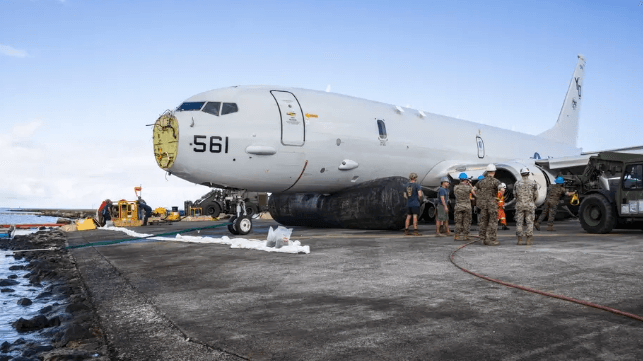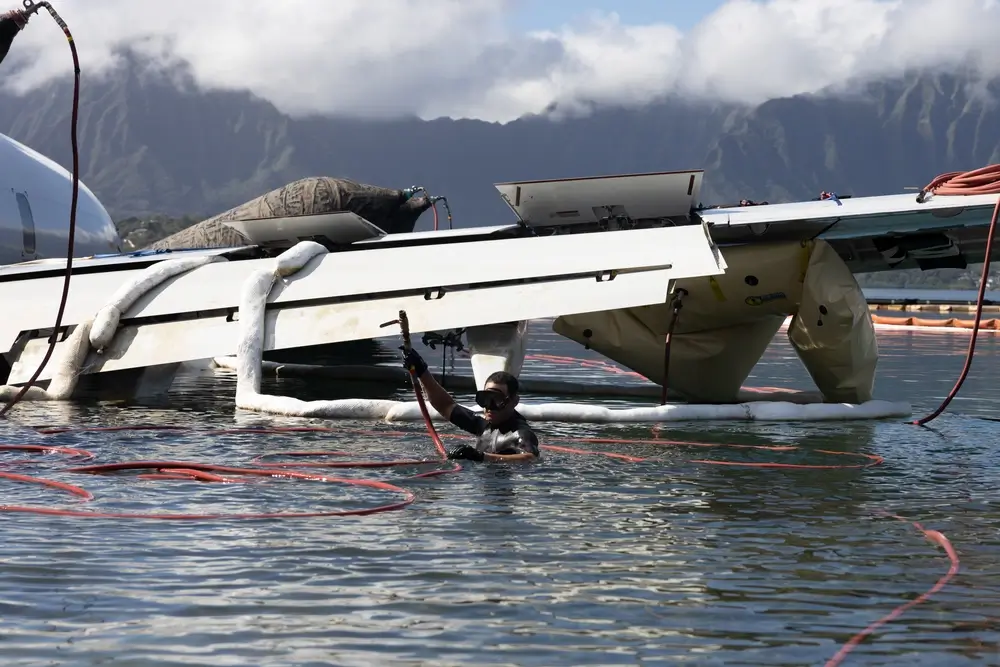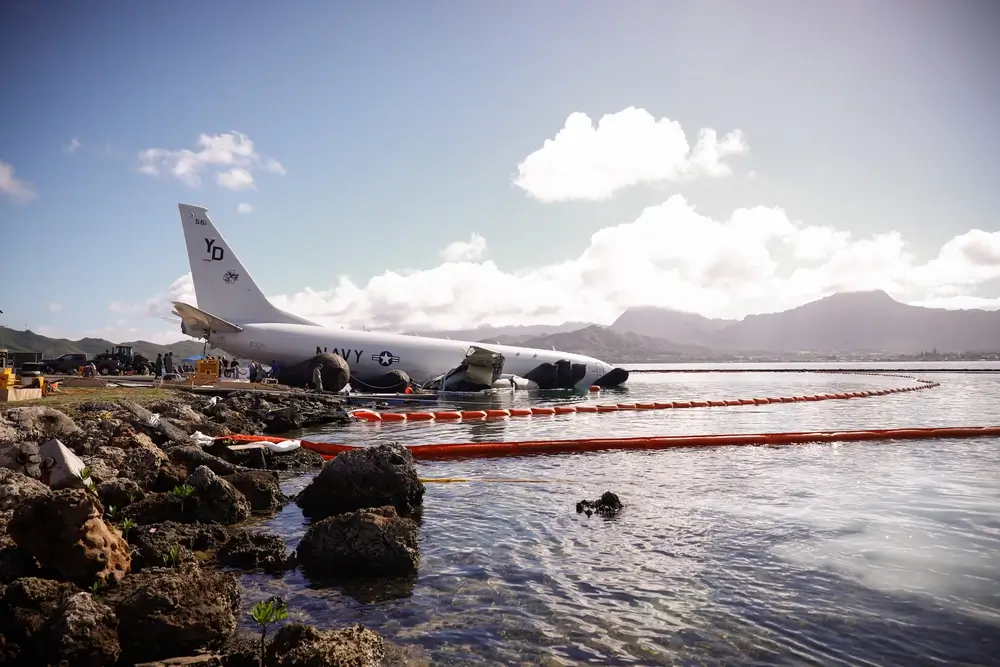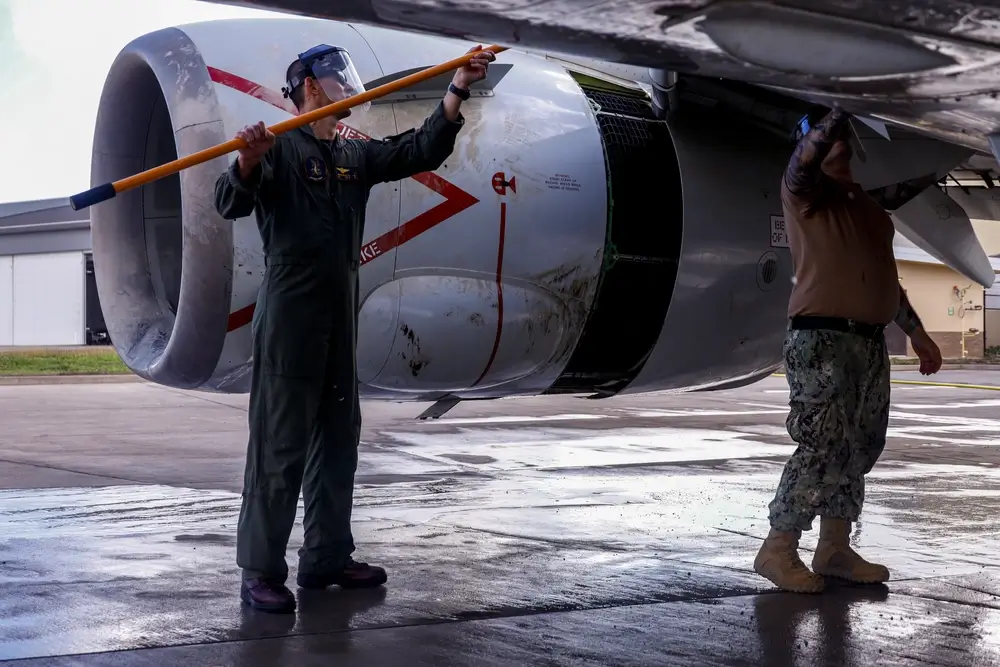U.S. Navy Recovers Patrol Plane From Kaneohe Bay

A team of U.S. Navy and commercial salvors have removed a P-8A maritime patrol plane from the waters of Kaneohe Bay, and it looks possible that the aircraft may be repaired and put back in service, even after two weeks immersed in saltwater.
On the afternoon of November 20, a P-8 Poseidon based out of Naval Air Station Whidbey Island landed on the main runway at Marine Corps Base Hawaii. It failed to stop before the end of the pavement and skidded into the water, coming to rest in shallow water in Kaneohe Bay. All nine crewmembers were able to make it to shore, and no injuries were reported.
According to the Navy, the aircraft was structurally intact, though it was missing its nosecone and radar. A team of divers quickly secured it to prevent it from drifting with the tide, and responders from the base deployed containment booms to prevent the spread of any possible spill. The Navy has a contentious relationship with Hawaii's elected officials and environmental regulators because of a past series of petroleum releases, and the plane - and its load of fuel - attracted considerable local scrutiny. Luckily no fuel was released and the boom proved unnecessary.




With assistance from Smit Salvage and Center Lift, the Navy Supervisor of Salvage and Diving (SUPSALV) placed float bags under the P-8A and repositioned it next to the runway's end. They proceeded to roll it - slowly and gently - back up onto the runway, inching along at a few feet per hour. Once they had it back on the runway, they deflated the bags to set the plane on its still-intact landing gear, then towed it away for sailors to scrub it down with freshwater. The total cost: just $1.5 million, a small fraction of the aircraft's value.

The P-8A is the Navy's premier anti-submarine warfare aircraft, but is found just as often in a maritime patrol and surveillance role. The Navy's P-8A squadrons rotate through forward base locations in the Western Pacific, including airfields in Hawaii, Guam and Japan. The plane is based on the ubiquitous 737-800 airliner and has a degree of parts commonality with the civilian aircraft.
Though the P-8A is affordable by military standards, and Boeing still has a hot production line for the airframe, the Navy plans to make an attempt at repairs before ordering a replacement. Aircraft immersed in saltwater are rarely put back into service, but the P-8A is designed for exposure to the marine environment, and this one may be the exception to the rule.
“Once it’s settled in its final parking spot, the aircraft will return to Maritime Patrol and Reconnaissance Wing and they will be able to begin the process of doing the assessment and repair on that aircraft and, if feasible, the Navy plans to return that aircraft to operational status,” on-scene commander Rear Adm. Kevin Lenox told USNI News.
